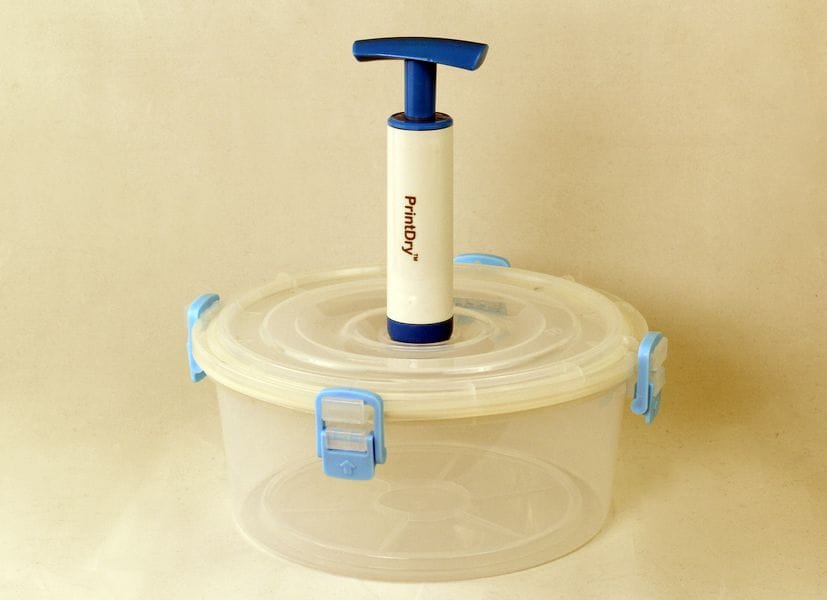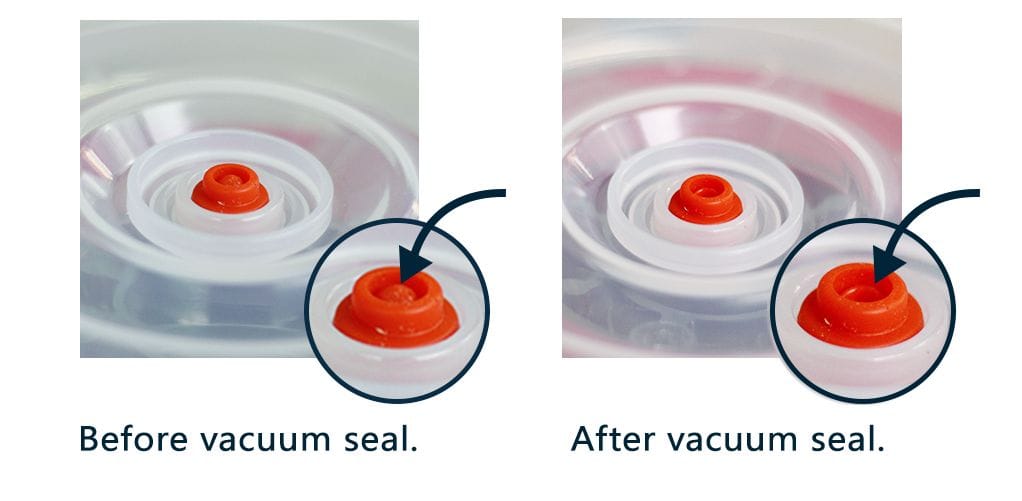
3D printer filament is often very high quality these days, at least from some manufacturers.
However, upon exposure to the atmosphere some thermoplastics can begin to degrade immediately. Nylon in particular is able to soak up very significant amounts of moisture in only hours, transforming a quality filament into junk.
The solution is to keep your filament dry. There are a variety of solutions here, ranging from bagging the spools with desiccant to carefully baking them for hours in a moderately warm oven. And when I say carefully, I mean it – you don’t want to open your oven to find a sloppy pile of former filament.
One solution I’ve been using is the PrintDry storage container, which is a heating system for spools. You can store two spools (one can be active for live printing) and the sealed PrintDry unit can be heated to a variety of commonly required temperatures.
But what happens when you have more than two spools? Do you put that spool in a sealed plastic bag? Are you absolutely certain that it does not have a hole in it? Are you sure you sealed it properly? Do you know if the desiccant is still active?
These and other issues could compromise your filament storage approach.
Now PrintDry, a Canadian company with manufacturing offices in China, has developed a complementary solution: a Vacuum Sealed Filament Container.

It’s composed of two plastic parts, a bowl and lid, which snaps on very tightly. On the lid there is a vacuum port and a pop-up mechanical indicator to show when sufficient vacuum is obtained.

Vacuum is created by applying a few pulls from the associated air pump that attaches to the top of the lid.
The lack of ambient air ensures your stored filament will retain its original properties for much longer than otherwise, as it is not exposed to water vapor as well as any other contaminants.
I believe this solution would be best used for those operating 3D printers using more expensive exotic filament materials that are subject to degradation. The purchase of a container for said materials would certainly pay for itself if a spool or two is corrupted through mishandling.
PrintDry is offering the Vacuum Storage Container for an introductory price of around USD$80, which seems like a good deal, especially for those using expensive materials.
Via Kickstarter

